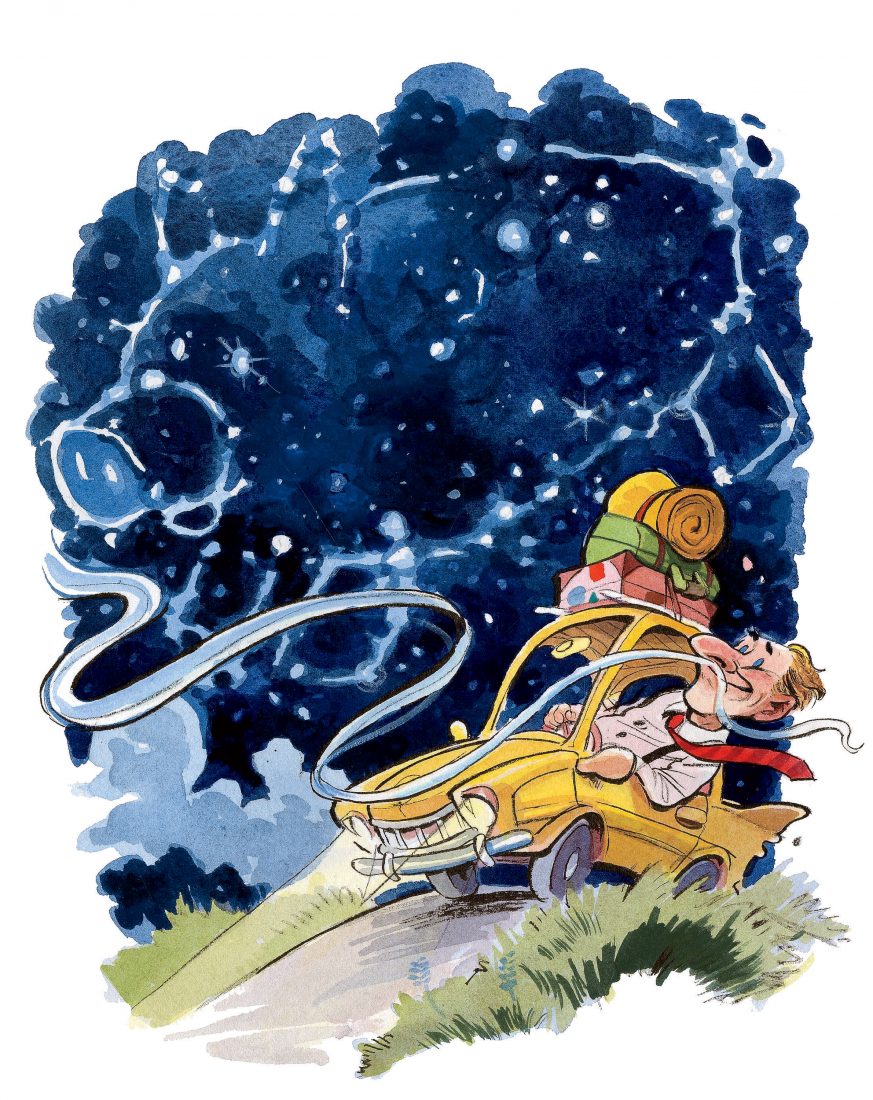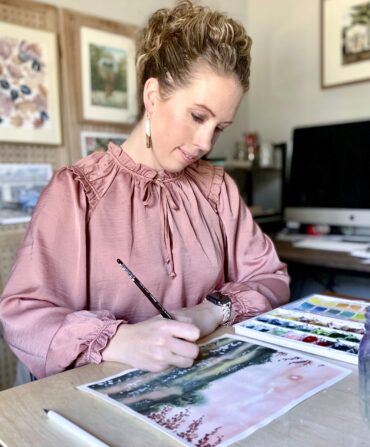Q. Can you give us some clues on finding a good barbecue joint on the road?
Pretty much anybody can do bad barbecue, which is why there’s so much bad barbecue to be had. A truly good barbecue spot is a hellish construct of iron, fire, and hickory set in a very specific arrangement producing the required clear, cerulean smoke. It’s Vulcan’s forge, basically, plus a bunch of dead pigs, some shredded cabbage, vinegar, and piles of sorry white bread. There’s a wilderness of hucksters out there, so how do we know when somebody’s making poetry out of that? In barbecue cosmology, there is no fail-safe architectural expression of culinary genius, but there are helpful markers. First, look around back. If you find no great honking pile of cured and curing hardwood of whatever genus—hickory is preferred but pecan or even fruitwoods work—hightail it out of there, because nobody’s cooking any real barbecue where you are. Second, look up in the sky. Steady, thick white smoke can be the beginning of a fire, but in a lunch rush it is an omen of evil. You want to see that almost-transparent veil of sky blue smoke so light that it’s close to not being there. It means that the forge is hot. Smell: If the meat’s being fired right, there’s a light—not a heavy—tang. Finally, does the place look like absolute hell? Because Vulcan, the genius of the divine forge, didn’t wreak his brilliant creations in a tearoom.
Q. We’re flat racing fans who want to dive into the steeplechase season this year. What do we need to know?
You’re headed for a splendid time. We have crushed the nouns over the last 264 years into one word, but a classic steeplechase—meaning a competitive cross-country hack from steeple to steeple, or from village church to the next village’s church—is thought to have been invented in 1752 by some passionate Irish horsemen, who, presumably, woke up one morning lacking the obligatory dogs for a real foxhunt and simply decided to bet on who could best race their horses hill and dale. Elegant country-boy decision, no? Though the fencing has been standardized over the centuries, the sport retains a strong countryside strand of foxhunting DNA. In its twenty-first-century American iteration, the steeplechase season orbits the South’s lush Piedmont foxhunting country, the western Carolinas and, of course, Virginia. Foxhunting’s closeness to the sport means that you should pack along your manners and your best blazer and khakis, as if you’d be spending Derby day in an owner’s box. Hats for the ladies, please. As spring rages upward along the Appalachians, the early races take place in the Carolinas’ thermal belt, such as in famously horsey Camden, South Carolina, where the Carolina Cup is run on April 2. At the twenty-first running of the Charlotte, North Carolina, Queen’s Cup, on April 30, tailgating is an art form, and there’s an actual “hat competition” for the fairer sex, so dress as outrageously British as you care to. Mainly, though, the gorgeous equine athletes’ liquid power over the fences will, breathtakingly, embody the spring.
Q. Last we looked, we had something like six weddings on the calendar, with more on the way. Any gift ideas?
Unless you want to run out and buy a half dozen red-and-white 1961 Thunderbird ragtops as beachmobiles for the couples, which I recommend for maximum splash at the weddings, there’s just one other answer to this seasonal conundrum: good iron skillets for everybody. Forget where the people are “listed”; no gift has the soulful reach or versatility of a skillet. Although it’s hard to beat the antique Birmingham Stove & Range “unmarked” skillets from the nineteenth and twentieth centuries, the brand doesn’t matter. You’re giving them a piece of iron, an apt metaphorical hope for a marriage if there ever was one, to be used in nourishing their families as they learn to cook together. All the saucing, braising, and simmering, the fried chicken and country ham, the smothered quail, all the eggs and bacon, the thousands of piping hot rounds of skillet-baked cornbread, every last bite of food that traverses these cooking surfaces, will nourish and uphold, and all of that work will also improve the pans. Not many presents get better with time. Their kids will fight over your skillets when their parents, and you, are long gone.








